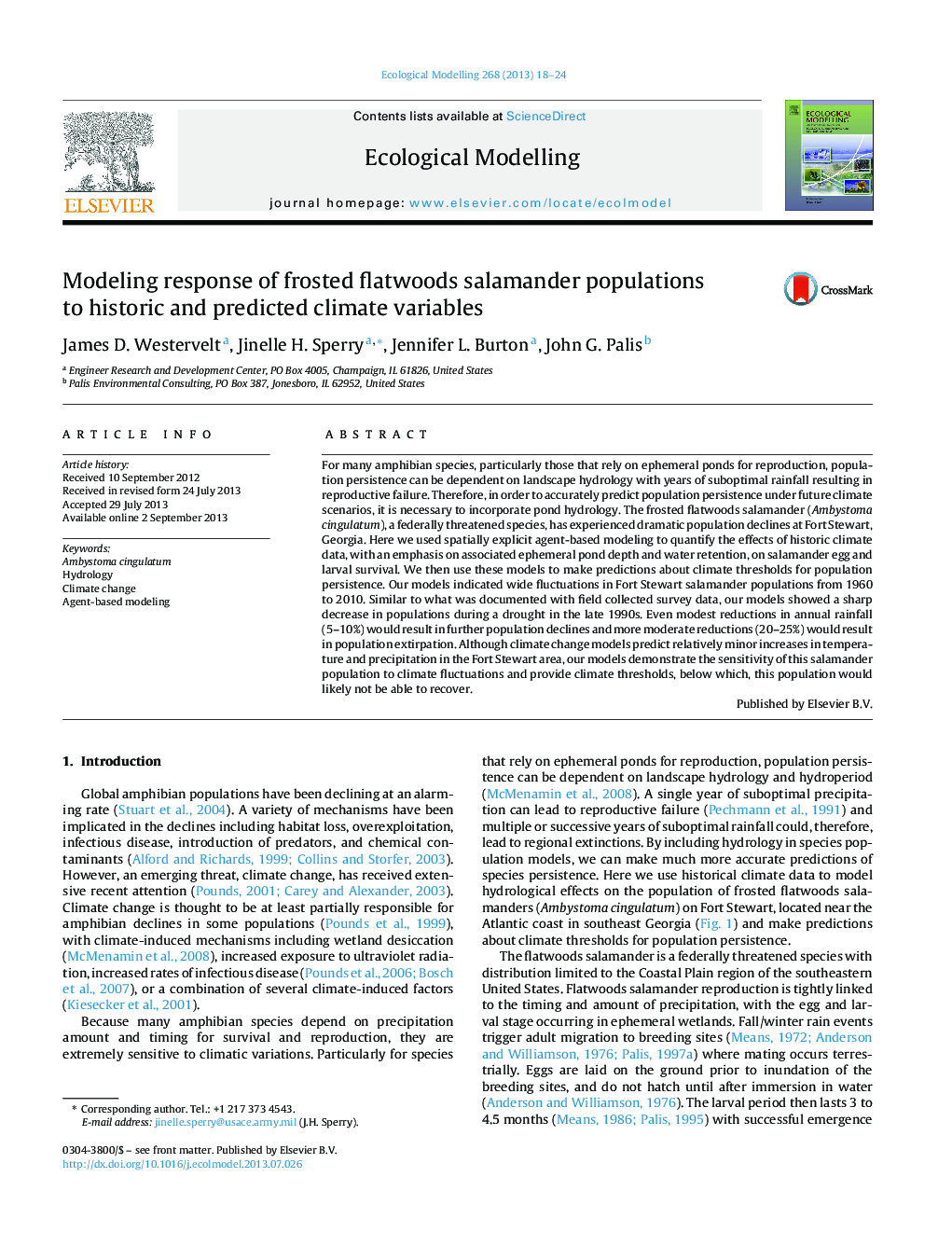| کد مقاله | کد نشریه | سال انتشار | مقاله انگلیسی | نسخه تمام متن |
|---|---|---|---|---|
| 6297042 | 1617478 | 2013 | 7 صفحه PDF | دانلود رایگان |
عنوان انگلیسی مقاله ISI
Modeling response of frosted flatwoods salamander populations to historic and predicted climate variables
ترجمه فارسی عنوان
واکنش مدل سازی جمعیت های سالاماندر زمستانه مشت به متغیرهای اقلیمی تاریخی و پیش بینی شده
دانلود مقاله + سفارش ترجمه
دانلود مقاله ISI انگلیسی
رایگان برای ایرانیان
کلمات کلیدی
موضوعات مرتبط
علوم زیستی و بیوفناوری
علوم کشاورزی و بیولوژیک
بوم شناسی، تکامل، رفتار و سامانه شناسی
چکیده انگلیسی
For many amphibian species, particularly those that rely on ephemeral ponds for reproduction, population persistence can be dependent on landscape hydrology with years of suboptimal rainfall resulting in reproductive failure. Therefore, in order to accurately predict population persistence under future climate scenarios, it is necessary to incorporate pond hydrology. The frosted flatwoods salamander (Ambystoma cingulatum), a federally threatened species, has experienced dramatic population declines at Fort Stewart, Georgia. Here we used spatially explicit agent-based modeling to quantify the effects of historic climate data, with an emphasis on associated ephemeral pond depth and water retention, on salamander egg and larval survival. We then use these models to make predictions about climate thresholds for population persistence. Our models indicated wide fluctuations in Fort Stewart salamander populations from 1960 to 2010. Similar to what was documented with field collected survey data, our models showed a sharp decrease in populations during a drought in the late 1990s. Even modest reductions in annual rainfall (5-10%) would result in further population declines and more moderate reductions (20-25%) would result in population extirpation. Although climate change models predict relatively minor increases in temperature and precipitation in the Fort Stewart area, our models demonstrate the sensitivity of this salamander population to climate fluctuations and provide climate thresholds, below which, this population would likely not be able to recover.
ناشر
Database: Elsevier - ScienceDirect (ساینس دایرکت)
Journal: Ecological Modelling - Volume 268, 24 October 2013, Pages 18-24
Journal: Ecological Modelling - Volume 268, 24 October 2013, Pages 18-24
نویسندگان
James D. Westervelt, Jinelle H. Sperry, Jennifer L. Burton, John G. Palis,
